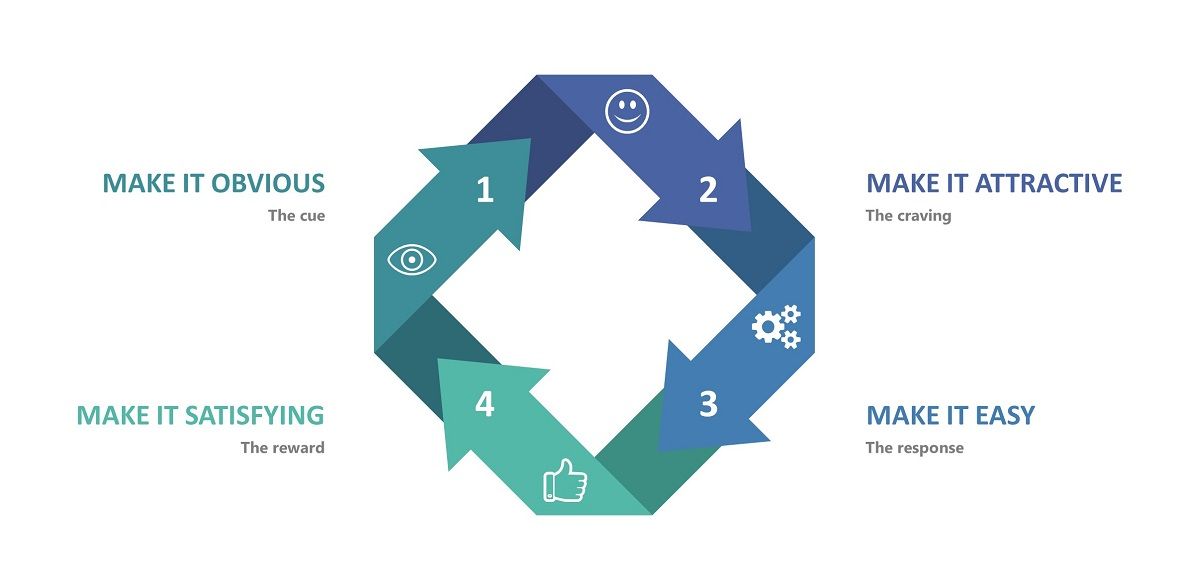Earlier this year, I read the international bestseller Atomic Habits by the author James Clear. This book outlines how building good habits can be achieved, not with one substantial change but rather the compound effect of small decisions. These decisions, or marginal gains, deliver results when consistently applied over time, which is proven by the case studies and empirical evidence described in Atomic Habits. Ever heard of someone who has achieved overnight success? The chances are that there were thousands of small decisions which preceded that person's success. Instead of merely focusing on their goals, they would have been cognizant of the processes which led to those goals, and these processes would have undoubtedly included the formation of good habits. This is one of the many underlying themes in Atomic Habits.
The book introduces a number of different concepts which describe how to build good habits through small improvements. Strategies such as habit stacking (a new habit can be introduced by placing it after an existing habit), the Goldilocks rule (a habit should not be too easy or too difficult), and the two minute rule (a new habit can be established by performing it for just two minutes on a consistent basis) all provide practical examples of how better habits can be integrated in the daily routine. One of the more interesting concepts is what Clear describes as the Four Laws of Behaviour Change. These laws are as follows:
- Make it obvious (the cue)
- Make it attractive (the craving)
- Make it easy (the response)
- Make it satisfying (the reward)

These laws build upon the cue-routine-reward concept described in The Power of Habit by Charles Duhigg. The theory is that an action should conform to these four laws in order to become a habit. These laws form a continuous habit loop, where the habit will be repeated if the reward is satisfying enough.
The first step in any habit is the cue. The cue is the trigger which initiates behaviour. When the cues are obvious and visible, it is more likely that the action will be started.
Upon seeing the cue, an emotional response will be triggered, as the brain starts to anticipate the reward, and this is the craving to carry out the action. The craving is the motivation behind every habit. It's worth pointing out that the emotional response to the anticipation of a reward can be stronger than the emotional response to the reward itself. The craving may not necessarily be for a tangible reward, but it could include an emotional reward of approval, praise and recognition from those around us.
After the craving comes the response. The response is the action which is performed. For the action to happen, it should be possible to do it with as little effort or friction as possible. The environment should be primed in such a way which supports this - the easier it is to do the action, the more likely it is that it will be repeated.
Once the action has taken place, the final step is the reward. The reward is the end goal of every habit, and all of the previous steps are completed on the basis that the reward will be received at the end. If the reward is immediate, it is more likely that the action will be repeated, especially as the reward helps to satisfy the craving experienced before the action took place. The reward could be as simple as the feeling of making progress, so a habit tracker is a good way to provide clear evidence of progress, even if it is as simple as placing a tick in a box to say that the action has been done.
When trying to break bad habits, these laws can be inverted - for example, the first law would be to make the cue invisible rather than obvious. If the temptation cannot be seen, the habit is less likely to happen.
One quote in Atomic Habits which strongly resonated with me was this one:
Often, people who build good habits, or break bad ones, are labelled as having strong willpower. However, in many cases, it is because they have created a system which incorporates these four laws, and where the probability of success outweighs that of failure. Better habits are developed through better systems.
Atomic Habits is a well-written book, which gives a superb insight into the psychology behind habits, and how people can change their behaviour to build an environment where good habits are inevitable and bad habits impossible. The book includes numerous strategies that people can adopt into their daily routine, some of which I've been able to adopt myself. Of course, these strategies may work for some people and not others, but after having read this book, I'm more convinced that a person will achieve the results they are after, when they have the discipline to create a system driven by consistent habits.
I'd love to hear what works for you when building good habits or breaking bad ones, so join the discussion and let me know your best tips and tricks.
